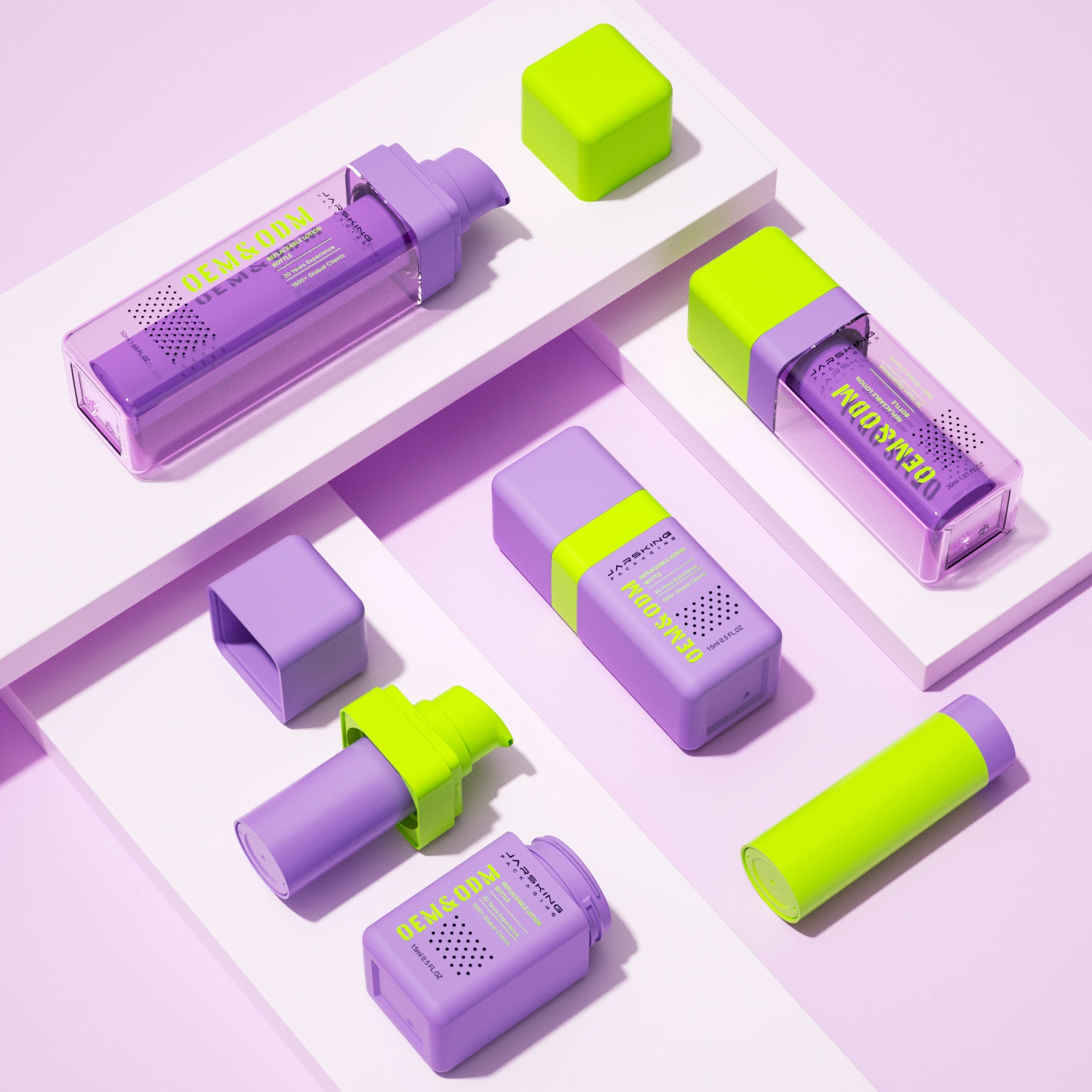The skincare industry is a battlefield where first impressions can make or break a brand. Unlike snacks or everyday household goods, skincare products are personal, deeply tied to rituals of self-care, beauty, and health. When a consumer chooses a moisturizer, serum, or eye cream, they are not only purchasing the product inside but also investing in trust, ritual, and the promise of transformation. How that promise is presented matters immensely—and much of that responsibility falls on packaging.
This is why double-wall packaging, once reserved only for the most high-end luxury houses in Paris, Milan, and Tokyo, has found its way into the toolkit of ambitious skincare startups and established brands alike. To the layperson, a “thicker jar” might seem like a mere design flourish. To insiders, however, double-wall packaging represents so much more. It is at once a visual cue of prestige, a functional barrier that shields delicate formulas, and a silent ambassador of brand values.
Yet, many decision-makers—especially those balancing budgets at a startup—look at double-wall packaging through the narrow lens of “it’s more expensive.” What they often miss is the hidden ROI carried by such designs. In a market flooded with thousands of creams and serums, double-wall packaging not only elevates brand aesthetics but often leads directly to stronger sales velocity, reduced spoilage, improved consumer trust, and even social media virality.
In this blog, we will explore double-wall packaging in exhaustive detail: what it is, how it manufactures perception of luxury, the science of protection it provides, the engineering behind its build. We’ll also examine how double-wall formats can become tools for brand differentiation and future-proofing in a crowded global beauty marketplace.
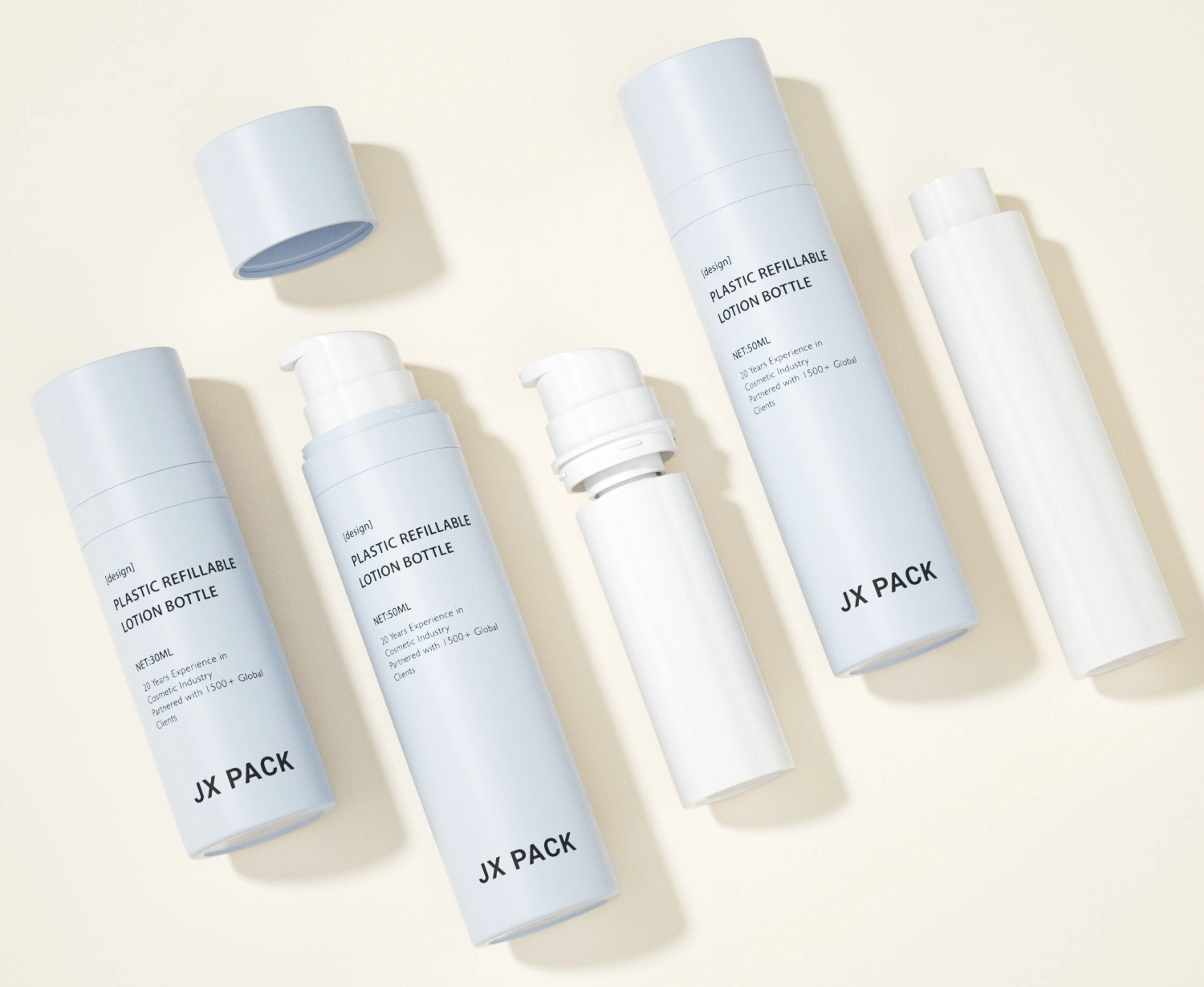
1. What is Double-Wall Packaging?
At its simplest definition, double-wall packaging is a container system that features two structural walls: an inner container that holds the skincare formula and an outer container that creates a secondary layer of depth, protection, and decoration. Between those walls may lie an insulating air gap or simply the illusion of one, depending on the construction.
Forms and Applications
Double-wall jars: The most recognizable application. A 50ml cream in a double-wall jar often feels more “substantial” than the same product held in a single-wall alternative. Iconic moisturizers from brands like Estée Lauder or La Mer use double-wall designs to physically communicate luxury.
Airless double-wall bottles: These combine the protective features of double-walls with airless pump technology, preventing oxygen exposure. Popular for vitamin C serums and sunscreens.
Dispensers and pumps: Double-walls aren’t limited to jars—they can be applied to lotion bottles, refillable systems, and compact packaging.
Single-Wall vs. Double-Wall
Single-wall containers are functional and widely used in mass-market skincare. They are inexpensive, lightweight, and relatively easy to recycle. However, they lack the tactile and visual prestige frequently needed at the mid- to luxury-levels of the cosmetics space. Double-wall containers, on the other hand, serve as silent marketing devices. The mere act of holding one creates an impression of sturdiness, clarity, and care.
Why Skincare Needs More Protection
Unlike food, most skincare products sit on shelves for months or years. Many are formulated with delicate active ingredients like niacinamide, hyaluronic acid, retinol, or vitamin C—all of which can oxidize, degrade in sunlight, or lose potency when exposed to air. Packaging is as critical as formulation. Many chemists even design formulas for specific packaging conditions. Double-wall packaging, therefore, is not “just pretty”—it’s often vital to product efficacy.
2. The Psychology of Luxury
The luxury skincare industry operates on an economy of perception. Unlike basic commodities, where function is paramount, skincare is heavily influenced by the consumer’s subconscious assessment of quality and prestige. Packaging is one of the strongest nonverbal cues in this decision-making process. It communicates messages of exclusivity, safety, and value without the need for words.
Consumers often don’t consciously analyze why one jar feels more premium than another. Instead, their brains register dozens of sensory inputs—weight, texture, sound, and even resistance—that collectively create a sense of luxury. Double-wall packaging is especially powerful in feeding these subconscious signals.
Weight and Heft as Signals
In luxury psychology, physical weight is associated with substance, authenticity, and durability. Behavioral studies show that people perceive heavier objects as more valuable and trustworthy. This is why luxury watches, pens, and smartphones are often designed to feel substantial in hand.
When applied to skincare, heft plays a similar role. Imagine buying a $150 face cream packaged in a thin, squeaky single-wall jar. The dissonance between high pricing and flimsy packaging triggers doubt: Am I paying for the formula or just the marketing?
Double-wall packaging solves this. By layering materials—such as durable acrylics, high-transparency plastic, or frosted coatings—it creates reassuring weight even without unnecessary excess. Consumers feel this heft instantly when lifting the jar off a shelf or unboxing it at home. It signals: This product is premium, trustworthy, and worth the price.
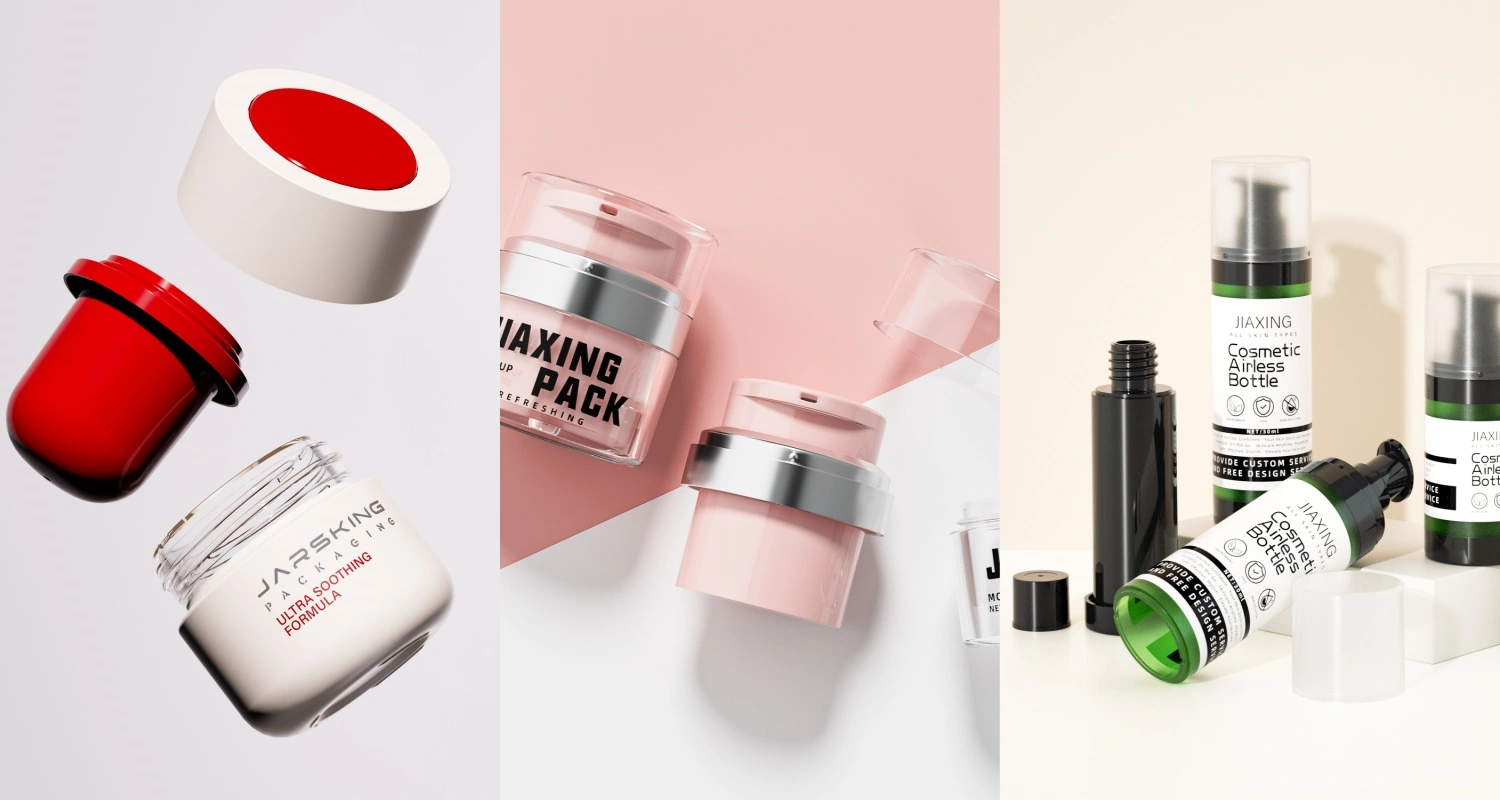
Layered Beauty
Aesthetics in luxury skincare are rarely about boldness—they are about depth, subtlety, and sophistication. Double-wall packaging naturally creates an optical illusion of depth, making the jar or bottle appear jewel-like.
Light refracts and scatters through the outer wall, enhancing the appearance of logos, label colors, or frosted finishes. This is not just visual appeal—it mirrors the way luxury goods often present themselves as “precious objects.” Think of jewel cases, perfume bottles, or art displays. The double-wall effect transforms a jar into something more akin to a museum display than a mere container.
For consumers, this “layered beauty” suggests that what’s inside is equally rare and elevated. It reinforces perceptions not just of luxury, but of treasure.
Trust and Cleanliness
Trust is at the core of skincare purchases. These products are applied to the most visible and delicate part of the body—the face—and consumers want absolute assurance that they are effective and safe.
Just as consumers associate tamper-proof caps with safety in pharmaceuticals, double-wall packaging conveys a sense of protection. The thicker body of the jar communicates that external factors—light, air, bacteria—are kept at bay. This sense of fortification reduces subconscious anxieties about contamination or spoilage.
Even if consumers don’t explicitly know the science (“this jar reduces oxygen diffusion”), the subconscious message is clear: this product is shielded and carefully preserved. That psychological layer of safety strengthens trust in the brand itself.
Emotional Experience
Luxury is experience-driven. Beyond function, consumers seek the micro-rituals that make them feel pampered, indulged, and cared for. Packaging plays a powerful role in building these rituals.
Opening a double-wall jar feels ceremonial compared to twisting open a thin plastic one. The lid offers slight resistance, making the motion deliberate. The edges feel smooth, cool, and polished, further contributing to the sense that this is not just skincare—it is a daily luxury ritual.
These experiences activate what psychologists call hedonic consumption: pleasure derived not just from the product but from the act of using it. Small daily luxuries like this accumulate into loyalty. A consumer who enjoys handling their product every morning is far more likely to repurchase and recommend it.
Brands like La Mer and Dior exemplify this principle. Their creams are not just creams—they are rituals. Consumers don’t only use them; they savor them. And double-wall packaging is integral to that experience.
Why This Matters for Brands
Luxury psychology is not superficial—it drives real business results. Consumers justify spending significantly more because packaging elevates the perception of what’s inside. In a crowded market with thousands of competing creams and serums, the brands that feel more luxurious often win, even if the formulas are similar.
Double-wall packaging provides an accessible, design-driven way to tap directly into this psychology. It reinforces equity at every stage: on the shelf, during unboxing, and through daily use. Each moment strengthens loyalty by making the consumer feel they didn’t just buy skincare—they invested in a luxury experience.
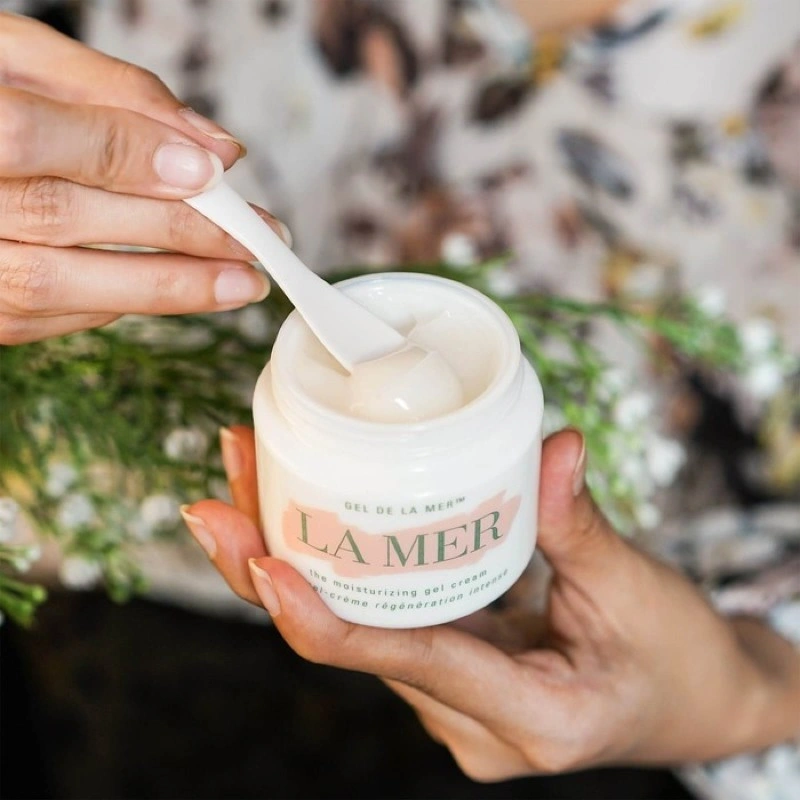
3. Protection That Preserves Product Integrity
One of the strongest rationales for double-wall packaging is scientific, not just aesthetic: protecting the formula for maximum efficacy.
Protection Against Light
UV light can break down sensitive active ingredients. Vitamin C serums, for example, oxidize and turn orange when unprotected. Double-wall outer shells can be tinted, opaque, or frosted, reducing exposure drastically while maintaining visual appeal.
Oxygen Barrier
Many actives, including retinol, degrade upon oxygen exposure. Double-wall systems, when paired with snug sealing lids or airless pumps, form better oxygen barriers than single-wall jars. This prolongs shelf life and reduces consumer disappointment.
Consistent Shelf Stability
From warehouse to store shelf, skincare products face temperature swings, fluorescent lighting, and extensive handling. Skincare that survives these stressors without visible change becomes an asset. Double-wall designs provide insulation, slowing down environmental penetration.
Brand Trust Through Efficacy
Consumers who experience longer-lasting freshness are often unaware packaging is the reason. But that subtle satisfaction translates to higher repeat purchases and less skepticism toward claims. Luxury brands frequently leverage this invisible trust to justify premium pricing.
4. Functional Engineering Advantages
While the aesthetics of double-wall packaging capture attention and the psychology of luxury drives purchase, its engineering advantages form the foundation of its long-term value. Skincare formulas are complex—part science, part artistry—and the packaging has to balance protection, consumer usability, and logistical demands. Double-wall packaging delivers multiple functional benefits that extend beyond appearance, helping brands achieve formula stability, operational efficiency, and consumer satisfaction.
Thermal Resistance
Temperature fluctuations are one of the silent enemies of skincare integrity. Products stored in hot warehouses, transported across sunny climates, or delivered to consumers during summer risks destabilization. Ingredients like natural oils, waxes, and emulsifiers can separate, melt, or change texture under prolonged exposure to heat.
- Air gap insulation: The space between the inner and outer walls functions like built-in thermal insulation. Just as a double-pane window keeps homes more energy-efficient, a double-wall jar stabilizes the inner product temperature.
- Consumer use protection: Many consumers store products in bathrooms, where frequent hot showers create steamy, fluctuating conditions. Insulated double-walls help formulas remain stable longer in such environments.
- Shipping resilience: For e-commerce-heavy skincare brands, double-wall packaging reduces risk during long-distance shipping, where trucks or containers may expose packages to high heat. This ensures the product arrives in pristine condition.
In short, double-wall packaging stabilizes products from factory to final consumer ritual.
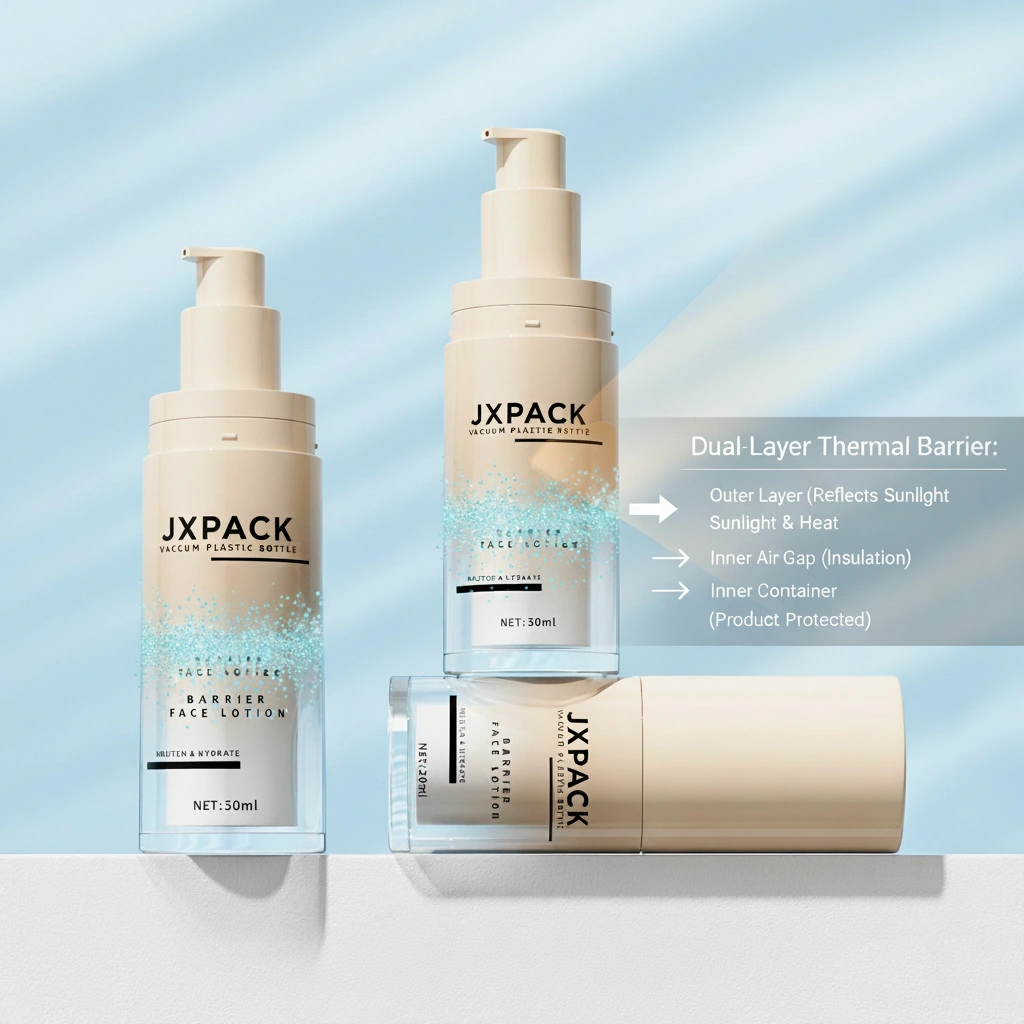
Physical Durability
Luxury skincare brands often lean toward “glass-like” packaging aesthetics—sleek, clear, and substantial. While consumers crave this elegance, it comes with a risk: breakage. Enter double-wall engineering, where the outer wall provides a protective buffer.
- Shock absorption: The outer structure absorbs impact if dropped, protecting the inner container and formula. This is particularly important as 1 in 3 e-commerce packages face rough handling during shipping.
- Reduced leakage: Fragility increases the risk of cracks and punctures that lead to messy leakage and brand-damaging consumer experiences. Double-walls drastically minimize this outcome.
- Balance between glamour and safety: Acrylic and SAN mimic luxury glass while offering more resistance, so brands can provide elegance without glass’s fragility.
This balance is invaluable to skincare startups competing in influencer-heavy markets. Imagine an influencer opening a package for unboxing content—if the jar arrives cracked or leaking, the marketing becomes negative PR instead of brand amplification.
Material Combinations
One of the strengths of double-wall packaging lies in its versatility. Different material combinations enable brands to balance luxury feel, sustainability, and formula compatibility.
- Inner wall (functional layer): Usually made from PP (polypropylene) or PET. These plastics offer excellent product compatibility, resisting interaction with oils or acids in formulas. They are lightweight and easily recyclable, keeping sustainability in view.
- Outer wall (aesthetic layer): Many brands opt for acrylic or SAN for their glass-like clarity and polish. These achieve a luxury look while being lighter and more durable than real glass. Frosting, tinting, metallic sprays, or gradient effects can be applied for brand expression.
- Hybrid systems: Some prestige brands experiment with glass outers combined with recyclable plastic inner pods. This allows the packaging to maintain a luxurious, weighty feel while enabling eco-friendly refill systems. For example, a Dior or Lancôme cream jar may allow swap-in refill pods into a permanent decorative glass-look shell.
This flexibility allows brands to tailor double-wall packaging precisely to their positioning—clinical, eco-luxury, or fashion-forward.
Integration with Advanced Dispensing
The marriage of double-wall construction with airless dispensing technology represents the pinnacle of skincare packaging innovation.
- Airless mechanics: Airless pumps prevent air from being sucked back into the container after each dispense, avoiding oxidation of active ingredients.
- Double-wall structural reinforcement: Pairing airless systems with double-wall builds provides oxygen isolation and physical sturdiness. The result is packaging that is both protective in science and persuasive in aesthetics.
- Consumer benefits:
Every pump delivers a consistent dose, eliminating waste.
Ensures consumers reach the very last drop without dipping fingers inside.
Protects sensitive formulations like vitamin C serums, probiotic skincare, or SPF creams, where stability is paramount.
Consumers may not understand all the engineering details, but they recognize the benefits immediately: products last longer, dispense smoothly, and feel consistent until the final use. This reliability creates brand trust that translates directly into loyalty and repeat purchase.
Why Engineering Matters for Brand ROI
These engineering advantages are not just technical footnotes—they are business strengths. Few consumers will explicitly say, “I loved this cream because the jar insulated it well,” but they will say, “This cream never spoiled, it worked from start to finish.” That perception makes them come back for more and justifies higher price points.
For brands, functional reliability prevents product recalls, reduces returns, and enhances relationships with retailers who demand consistency. When packaging protects formulas this effectively, it quietly becomes one of the most valuable performance assets in a skincare line.
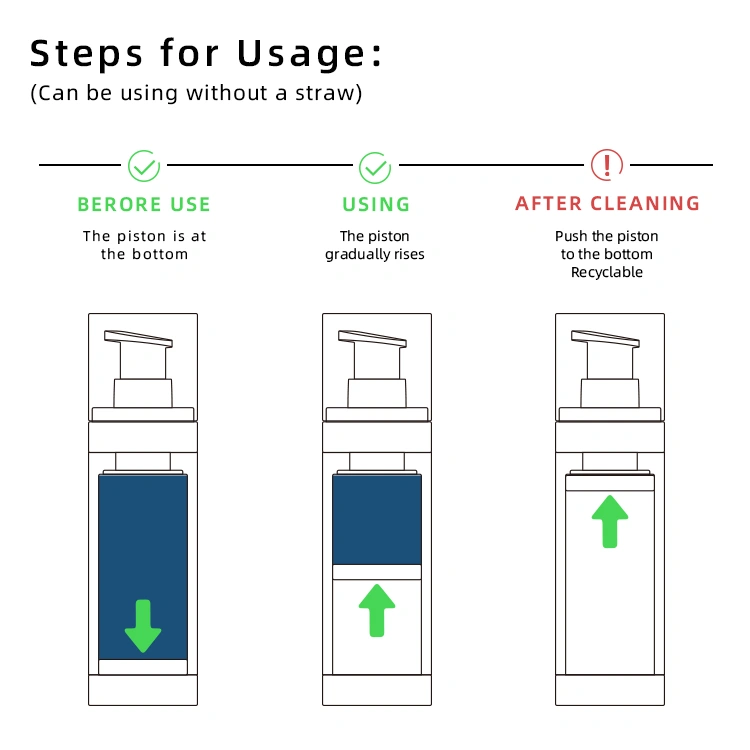
5. The Cost vs. ROI Tradeoff
Introducing double-wall jars or bottles into a skincare line creates an immediate and apparent increase in packaging expenses—typically 20–50% higher per unit than single-wall equivalents due to extra materials, additional assembly steps, and higher shipping volumes. At first glance, this upcharge can appear daunting, especially to founder-led startups and brands working with limited budgets. However, when evaluated through the full lens of return on investment (ROI), double-wall packaging becomes a strategic lever for revenue growth, margin expansion, and long-term brand value.
Premium Pricing Strategies
Prestige pricing is not just about the formula within, but how convincingly a brand communicates luxury and value from the outside in. Multiple studies and industry reports confirm that consumers immediately associate premium packaging with higher product quality and are not only willing but often expect to pay more for products that look and feel luxurious.
If a brand invests an additional $0.30–$0.50 per jar in double-wall packaging, it can easily support an uplift of $10–$20 or more in retail price, depending on the category and positioning. This markup is justified not just by the cost of materials but by the psychological perception of exclusivity, attention to detail, and overall prestige. Luxury packaging serves as a silent yet powerful salesperson—shaping the value equation in the consumer’s mind from the very first glance.
Lower Returns and Spoilage
The stability benefits of double-wall jars translate directly to bottom-line impact by drastically reducing spoilage and returns. Products prone to color changes, separation, or oxidation often generate consumer complaints, bad reviews, and the high costs of replacements or refunds. Returns impact not just revenue but reputation—a single viral review about a “spoiled” luxury cream can taint a brand’s image and cause a ripple effect in lost lifetime customer value.
By preserving potency, color, and aroma from first fill to last use, double-wall packaging cuts spoilage rates and the incidence of customer disappointment. Every returned product avoided saves not only the cost of the product itself, but also the logistics, labor, and potential future sales that could be lost from eroded trust. These are benefits that directly recoup the initial added packaging outlay.
Market Positioning Value
A lesser known—but critically important—upside is how double-wall jars “self-market.” Their visual and tactile appeal enhance shelf presence and online product thumbnails, making products stand out among rows of similar jars or dozens of website listings. This strong initial impression can shorten the customer journey, drive impulse purchasing, and increase shelf velocity—all critical for both physical retail sell-through and direct-to-consumer channels.
Importantly, this means brands can rely less on aggressive discounting, expensive paid ads, or elaborate promotional campaigns to drive attention and sales. The package itself becomes a cost-effective acquisition tool, helping to lower customer acquisition cost (CAC) over time. In a competitive market, even a modest improvement in conversion rate or basket size provides outsized returns as volume scales.

6. Replaceable and Refillable Functionality
A major innovation in double-wall packaging is the integration of replaceable or refillable components, adding eco-friendly value and convenience for both brands and end-users. Many modern double-wall jars, especially those used in the luxury and sustainable skincare segments, are engineered so that the inner container—the part that actually holds the cream or serum—can be swapped out when empty, while the outer shell is retained and reused.
This functional design offers several advantages:
- Reduced Waste: Only the inner pod is replaced or recycled with each purchase, dramatically cutting down on plastic usage and landfill burden compared to entirely new single-use containers.
- Cost-Efficiency: Brands save on packaging costs over time and can market cost-effective refill packs to loyal customers.
- Consistent Luxury Experience: Consumers continue to enjoy the premium look, feel, and presence of the original double-wall jar on their vanity, maintaining brand equity and satisfaction with every refill.
- Sustainability Branding: Offering refillable options positions brands as sustainability leaders in a competitive beauty market, appealing to eco-conscious buyers and meeting retailer requirements for reduced environmental impact.
This replaceable innovation not only enhances the product lifecycle but also deepens the customer relationship, turning one-time purchases into ongoing rituals anchored in brand identity and responsible consumption.
7. Branding and Differentiation
With beauty aisles and social feeds overflowing, skincare brands face an uphill battle to stand out. Smart packaging is one of the most reliable ways to break through the noise, and double-wall jars deliver multiple branding advantages that are both tangible and psychological.
Shelf Differentiation
Retail is a visual battlefield. On crowded shelves, mass-market single-wall jars and tubes begin to blend together. Double-wall packaging immediately stands out because its unique structure refracts and plays with light, creating depth and a subtle sheen that draws the eye. This “luxurious aura” means that even before consumers read a brand name or ingredients, they’re naturally drawn to pick up, touch, and interact with double-wall jars. Sometimes the very act of noticing and picking up the product prompts a sale before formulas are even compared.
Retail partners notice this, too. Reports from packaging suppliers and consultants show double-wall containers are often chosen specifically for new hero products or premium lines to help them hold their own alongside established luxury brands and avoid fading into background clutter.
Iconic Brand Identity
Double-wall systems are also a fast track to creating a signature look. Their construction allows for special shapes, custom-molded textures, engraving, debossed logos, and the use of special effect finishes (pearlescent, iridescent, frosted). Over time, these visual signatures accrue brand equity: think of how Clinique’s unchanging, heavy-walled moisturizer jars have become synonymous with credible, clinical prestige, or how indie brands use colorful outers and geometric forms to your define their own visual codes.
Luxury brands use this flexibility to create continuity across products, making their range instantly recognizable online or in store. As consumers become loyal and collect a brand’s offerings, the consistency of premium double-wall forms builds long-term emotional attachment.
Social Media Virality
In the digital age, “shelf appeal” extends beyond retail to the endless scroll of TikTok, Instagram, and YouTube. Double-wall jars photograph exceptionally well — their clarity, depth, and glow produce dramatic effects on camera. This has led to double-wall packaging repeatedly trending in “unboxing” videos, influencer reviews, and even ordinary customer posts.
Research shows beauty brands generate up to 10x more engagement on visual-first social platforms than other sectors, with up to 47% of millennials reporting social media directly influenced their last cosmetic purchase. Aesthetic, distinctive packaging is a major reason influencers prefer to feature certain products: it enhances both their content quality and the brand’s share of voice. The result is organic “earned media” that amplifies reach without extra ad spend.
Retail Partnerships
Professional, premium packaging also acts as a calling card with key retailers and distribution partners. Buyers at luxury retailers like Sephora, Ulta, or department stores assess not only the formula but how packaging reflects brand seriousness and readiness for their shelves. Double-wall design cues — thickness, finish, weight, unique shapes — provide a nonverbal signal that a brand aligns with luxury standards and will appeal to discerning, high-ticket shoppers.
In a world where brand stories are told on shelves, online, and in the palm of a hand, double-wall packaging acts as both the prologue and proof. It is not just a container but an asset — one that attracts, delights, and builds a lasting identity in both physical retail and the algorithmic theater of social commerce.
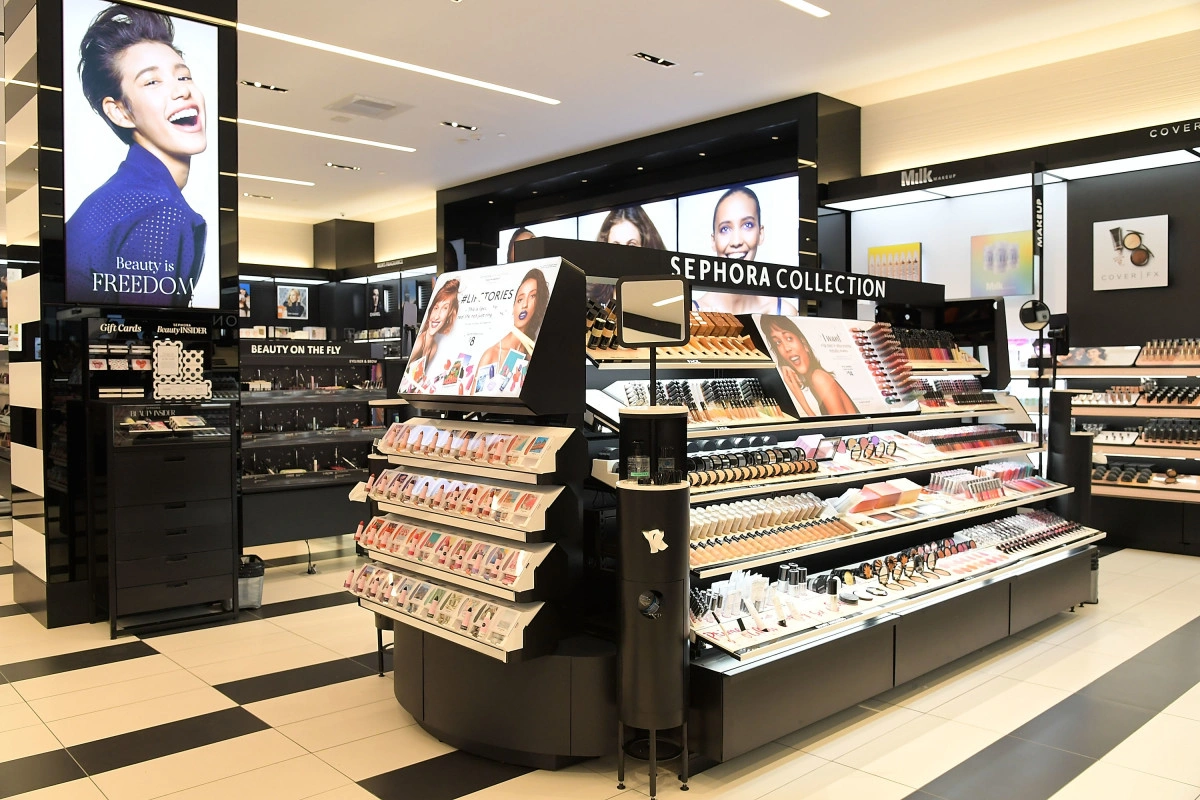
8. Operational Considerations
Supplier Dynamics
Not every supplier has mastered the nuances of double-wall jar construction. Brands need to work with partners experienced in skincare-grade compliance, capable of delivering airtight closures and decorated finishes that meet both regulatory and aesthetic requirements. Choosing the right manufacturer ensures performance consistency and reduces the risk of leakage, product spoilage, or non-compliance.
Lead Times and Costs
Customization of double-wall jars requires injection molding, decoration, and assembly, which can extend lead times compared to single-wall options. Smart planning is essential. By integrating secondary decoration techniques—such as UV coating, metallization, or silk screen printing—directly during production rather than post-market, brands can shorten timelines and optimize costs.
Storage and Shipping
Although double-wall jars occupy slightly more space than commodity single-wall containers, they offer clear operational benefits. The added durability helps reduce breakage during storage and transit, while airtight barriers minimize leakage—a critical advantage for e-commerce fulfillment and international shipping.
MOQ and Flexibility
Startups often encounter higher minimum order quantities (MOQs) for double-wall jars compared to single-wall alternatives. However, this barrier can be offset by SKU consolidation or refill system negotiations. By aligning packaging strategy with scalable inventory planning, smaller brands can still access premium packaging without overextending budgets.
9. Conclusion
Double-wall packaging has evolved far beyond design aesthetics—it is now a strategic convergence point for luxury signaling, product protection, engineering integrity, and long-term brand differentiation. For modern skincare brands seeking recognition, loyalty, and longevity, double-wall solutions offer compound returns that run much deeper than surface-level visual appeal.
Not only does double-wall packaging signal premium value—thanks to its substantial feel, glass-like clarity, and customizable finishes—but it also directly preserves product stability. The insulating dual-wall barrier protects temperature-sensitive, light-sensitive, and air-sensitive actives, ensuring consumers experience maximum efficacy and extended freshness throughout a product’s lifespan. Research and case studies consistently show that packaging design affects both shelf appeal and perceived quality, often influencing purchase decisions before a single word of a brand’s story is read. In crowded aisles and digital marketplaces, the distinguishing effect of double-wall packaging is tangible and proven
For brands, these packaging advances justify—and support—premium pricing, anchor market trust through reduced spoilage and returns, and seamlessly adapt to refillable and eco-conscious systems increasingly demanded by today’s consumers. Far from being a superficial flourish, double-wall packaging enables brands to future-proof their positioning as both luxury and responsible actors.
In a world where buying decisions are made in seconds, where unboxing videos drive virality, and where sustainability informs brand loyalty, double-wall packaging stands out as a unique solution. It creates a balance between beauty and performance, giving both brands and consumers a tangible sense of investing in something that is not only worth seeing but also worth trusting and experiencing to the last drop.
For ambitious skincare brands, double-wall packaging is not an optional luxury—it is a future-ready foundation for market leadership and consumer devotion.
